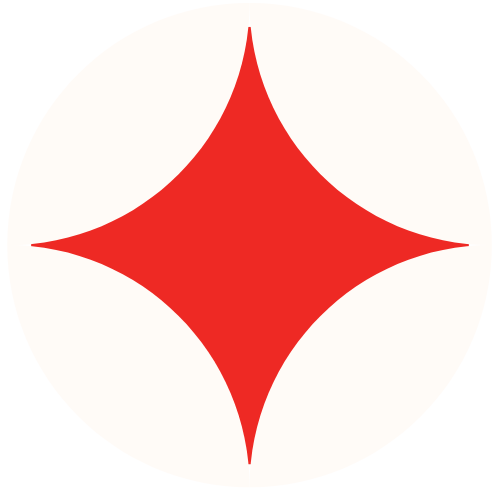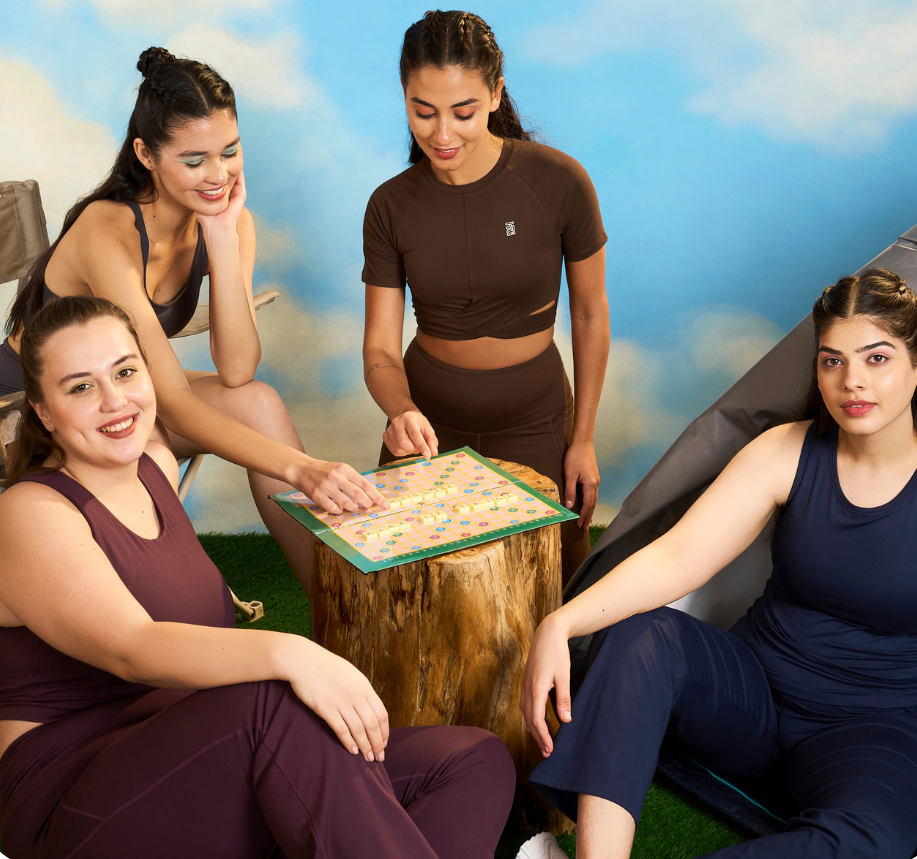Why Moisture Wicking Fabric Makes Your Workouts Actually Better
That sticky, uncomfortable feeling of sweat-soaked clothing during workouts is something we all hate. Moisture-wicking fabric pulls sweat away from your skin and lets it evaporate fast.
The way moisture-wicking fabric works will revolutionize your exercise routine. These fabrics use microfibers to create better air flow. Your body temperature stays regulated, and you stay dry even during the toughest workouts. This piece covers everything about moisture wicking fabric - what it is, its types, and how its breathable nature works.
High-quality athletic wear makes an important difference to your comfort and performance. The right activewear prevents skin irritation and helps you work out better. It does more than make you look good - it helps you reach your fitness goals faster.
Understanding moisture wicking fabric in activewear
Moisture wicking technology has transformed the way activewear handles sweat. Your workouts stay dry and comfortable, letting you focus on achieving your fitness goals.
What is moisture-wicking fabric?
These specialized fabrics pull sweat from your skin to the garment's outer surface, where it evaporates. The science behind this is "capillary action" - liquid moves through tiny fabric spaces without external force. Sweat spreads along the fibres through surface tension and capillary action. This distribution across a larger area helps sweat evaporate faster.
The fabric's system creates sweat droplets on its inner surface. These droplets move through small spaces in the weave to reach the outside where they dry. This two-step process prevents sweat from soaking the garment.
Why it's different from regular fabric
Regular fabrics like cotton soak up moisture and become heavy. Cotton's behavior makes it the opposite of moisture wicking fabric. Your cotton clothes get saturated with sweat and take forever to dry. This leaves you hot and sticky at first, then cold and uncomfortable later.
The fabric's structure creates the main difference. Moisture wicking materials blend hydrophobic (water-repelling) and hydrophilic (water-absorbing) fibers. The perfect mix uses 55% hydrophobic and 45% hydrophilic fibers. This combination moves moisture without getting saturated.
Popular moisture wicking fabric types
Synthetic and natural fibers can both wick moisture effectively:
Synthetic options:
-
Polyester - Lightweight, durable, and quick-drying; resists wrinkles and maintains shape
-
Nylon - Known for its stretch, mildew resistance, and smooth texture
-
Polypropylene - More water-repellent than polyester with excellent thermal properties for cold weather
Natural options:
-
Merino Wool - Natural wicking properties despite some moisture absorption; crimped fibers create space between skin and fabric
-
Bamboo - Natural moisture-wicking, antibacterial, and eco-friendly
-
Tencel/Lyocell - Biodegradable fiber from wood pulp offers excellent breathability
Performance garments often mix these materials. Polyester-spandex blends or polyester-merino wool combinations maximize comfort and function while maintaining moisture management that enhances your workouts.
How moisture wicking fabric improves your workout
The comfort level can make or break your workout. Moisture wicking fabric revolutionizes your exercise experience with tech that handles sweat like a pro.
Keeps you dry and focused
Your traditional cotton workout clothes soak up sweat into their fibers and feel heavy and damp. Cotton soaks up to 7% of its weight in sweat. This creates an uncomfortable, clingy feeling against your skin.
Moisture wicking fabrics take a different approach. These specialized materials use capillary action to pull sweat from your skin to the fabric's outer surface where it dries quickly. You stay dry and comfortable throughout your workout.
You focus better on your performance without soggy, clingy clothes getting in your way. Research shows athletes who wear moisture wicking fabrics last longer and feel less tired during intense workouts.
Supports body temperature control
Your body temperature stays in check - that's one of moisture wicking fabric's best features. These fabrics keep your body at the right temperature during workouts by moving sweat away from your skin and letting it evaporate fast.
Temperature control plays a vital part in how well you perform. Too much heat leads to tiredness and poor performance. Your body cools itself by sweating, and moisture wicking fabrics boost this process by helping sweat evaporate faster.
These fabrics also protect you in cold weather by preventing the dangerous cooling that happens when cotton soaked with sweat makes you cold.
Reduces distractions from discomfort
Moisture wicking fabrics do more than boost performance - they make workouts much more comfortable by stopping common annoyances. The quick-drying properties stop chafing and skin irritation that happens when skin stays wet too long.
These fabrics are great for hygiene too. They move sweat away from your skin and stop bacteria growth that causes bad smells. Your clothes last longer and you won't have to worry about post-workout odors.
The light weight of these fabrics lets you move freely compared to heavy, sweat-soaked options. Better movement means you can do exercises with proper form and full motion, which makes your workout better and more fun.
Health and injury prevention benefits
Moisture-wicking fabric does more than boost your performance - it's a vital part of staying healthy while you work out. These benefits go way beyond just feeling comfortable and directly affect your physical well-being in several ways.
Avoiding rashes and bacterial buildup
Sweat-soaked fabric becomes a perfect breeding ground for bacteria. Your skin develops problems like redness, irritation, and uncomfortable rashes when sweat stays trapped against it. The bacterial growth can lead to infections in worst-case scenarios.
Breathable moisture-wicking fabric stops these problems by quickly pulling sweat away from your skin. This fast moisture transport reduces your risk of developing:
-
Heat rash (small red bumps in sweat-accumulation areas)
-
Chafing in high-friction zones like thighs and underarms
-
Bacterial and fungal infections including athlete's foot
-
Acne and other skin irritations
Advanced moisture-wicking fabrics now come with antimicrobial treatments that cut bacterial growth by over 99%. This helps eliminate body odor while protecting your skin.
Better joint and muscle support with snug fit
Quality moisture-wicking clothes often include compression technology that gives vital support to your muscles and joints. This compression puts gentle pressure on your body to improve blood flow and reduce muscle movement during activity.
These garments fit snugly to stabilize your joints - especially helpful for ankles, knees, and wrists during high-impact exercises. The compression technology helps you recover faster by flushing out lactic acid, which reduces soreness after workouts.
Research shows that well-fitted compression wear can boost specific aspects of performance and endurance. Athletes show improved time to exhaustion and better running economy.
Minimizing risk of slips and strains
Wet, soggy fabric isn't just uncomfortable - it creates real safety risks. Moisture-wicking socks that get too wet start slipping inside shoes. This can cause blisters or make you less stable.
Good moisture management stops you from overheating during intense workouts. Cotton clothing holds moisture and can lead to serious heat-related injuries like heat stroke.
Moisture-wicking fabric lets you move more precisely by eliminating heavy, damp clothing that limits mobility. This freedom helps maintain proper form throughout your workout and reduces exercise-related injury risks.
Choosing the right moisture wicking gear
Picking the right moisture wicking apparel takes more than just grabbing anything with a "performance wear" label. The right gear will boost your exercise experience with smart design and material choices.
Tips for selecting breathable moisture wicking fabric
Smart shoppers get into the fabric structure details carefully. The best materials have tiny channels that pull sweat away from your skin quickly. Open weaves or mesh panels add ventilation and make the cooling effect even better.
Your gear needs the right fit - not too loose or tight. A snug fit that doesn't restrict movement keeps the fabric close to your skin and wicks away moisture properly. The garment should move naturally with your body without causing any discomfort.
Odor control features matter too. Many fabrics come with antimicrobial treatments or natural antibacterial properties that stop odor-causing bacteria. To cite an instance, bamboo has natural antibacterial qualities that make it great for keeping odors away.
Matching fabric to workout type
Each activity needs specific moisture wicking solutions:
-
High-intensity workouts: Polyester or nylon blends work best. They dry fast and breathe well for running, HIIT, or spinning.
-
Strength training: Breathable, stretchy fabrics let you move freely through exercises.
-
Yoga/Pilates: Flexible, supportive fabrics help you hold stretches and poses comfortably.
-
Outdoor activities: Merino wool works great in cold weather since it regulates temperature naturally. Lightweight synthetics with UV protection are perfect for hot days.
Signs of high-quality moisture wicking clothing
Quality gear usually features seamless construction or flat seams that prevent chafing. Look for strategic mesh panels or perforations where you sweat most. Stay away from pure cotton, silk, or denim - these materials soak up moisture instead of wicking it away.
Care instructions tell you a lot about quality. Premium moisture wicking clothes usually need cold water washing. They shouldn't go near fabric softeners because these products can block the fabric's pores and reduce its moisture-wicking power.
Conclusion
The science behind moisture-wicking fabric shows why athletes and fitness enthusiasts rely on it so much. In this piece, we've explored how these special materials turn sweat from an annoying workout problem into a well-managed cooling system. The right activewear doesn't just feel good on your skin—it helps you perform better.
Without doubt, these fabrics do much more than just keep you comfortable. You can work out better when you're not thinking about wet, heavy clothes weighing you down. On top of that, it helps your health by cutting down bacterial growth, keeping your temperature stable, and protecting your skin from irritation. These fabric's technology keeps working to keep you dry and focused on your fitness goals instead of uncomfortable clothes.
Finding the right moisture-wicking gear ended up being about matching your workout needs to the right fabric types. You might like synthetic materials like polyester and nylon, or natural ones such as merino wool and bamboo. Success comes from getting well-fitted clothes made with quality materials. Quality moisture-wicking activewear isn't just about style—it creates the best conditions for your body's performance.
Note that moisture-wicking technology has revolutionized the old cotton workout clothes. Though it costs more at first, these performance fabrics give you more value through their durability, comfort, and improved workout experience. Next time you exercise, notice how your clothes affect your performance—you'll find why moisture-wicking fabric makes your workouts better.
FAQs
Q1. How does moisture-wicking fabric improve workout performance?
Moisture-wicking fabric enhances workout performance by keeping you dry and comfortable. It draws sweat away from your skin, allowing it to evaporate quickly, which helps regulate body temperature and reduces distractions from wet, clingy clothing. This allows you to focus better on your exercise and maintain endurance during high-intensity activities.
Q2. What are the health benefits of wearing moisture-wicking activewear?
Wearing moisture-wicking activewear offers several health benefits. It helps prevent skin irritation, rashes, and bacterial growth by quickly moving sweat away from your skin. The fabric also provides better joint and muscle support, especially when combined with compression technology. Additionally, it minimizes the risk of slips and strains by maintaining a dry, stable environment for your feet and body.
Q3. How do I choose the right moisture-wicking gear for my workouts?
To choose the right moisture-wicking gear, consider the type of workout you'll be doing. Look for breathable fabrics with tiny channels that efficiently pull sweat away from your skin. Ensure a snug but not restrictive fit, and consider features like odor control. For high-intensity workouts, opt for quick-drying polyester or nylon blends, while yoga or Pilates may require more flexible, supportive fabrics.
Q4. Is moisture-wicking fabric suitable for all types of exercise?
Yes, moisture-wicking fabric is suitable for various types of exercise. It's particularly beneficial for high-intensity workouts, running, and activities that generate a lot of sweat. However, it's also useful for lower-intensity exercises like yoga or strength training, as it helps maintain comfort and reduces distractions from moisture. The key is to choose the right type of moisture-wicking fabric for your specific activity.
Q5. How does moisture-wicking fabric compare to traditional cotton for workouts?
Moisture-wicking fabric significantly outperforms traditional cotton for workouts. Unlike cotton, which absorbs sweat and becomes heavy and damp, moisture-wicking fabrics pull sweat away from your skin and allow it to evaporate quickly. This keeps you drier, more comfortable, and helps regulate your body temperature more effectively. Moisture-wicking fabrics also tend to be more durable and maintain their shape better than cotton during intense physical activities.



